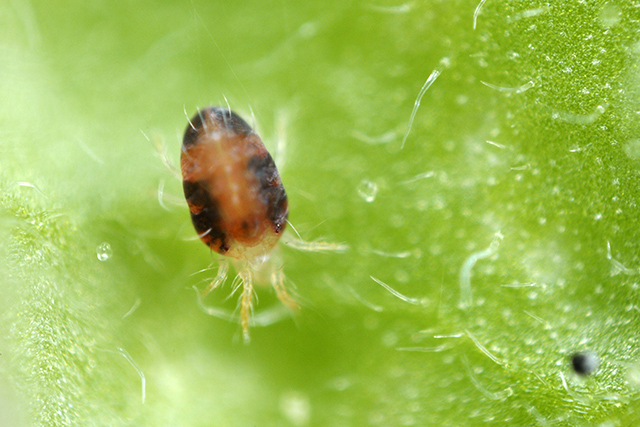Start them young: Children need to learn about proper eating habits as early as 6 years old
09/08/2018 / By Ralph Flores

Children are as young and innocuous as they come that most adults believe they are exempt from most of the conditions that plague adults. However, this notion couldn’t be farther from the truth, with chronic conditions – such as obesity – known to develop as early as childhood. Fortunately, research published in the Cochrane Database of Systematic Reviews indicates that there are proven methods to effectively address childhood obesity and overweight. Two reviews, in particular, revealed that changes in diet, exercise, and behavioral treatments – when done in concert – can create “small but important reductions in measures of body mass” in school-aged children, as well as adolescents.
Much like its adult counterpart, childhood obesity is a serious health issue all around the world. In its latest data, the World Health Organization estimates that over 41 million children under the age of five are overweight. These not only put them at risk of complications such as diabetes, high blood pressure, sleep problems, and asthma, but it can also negatively impact their self-esteem, which can cause mental health problems and a reduced quality of life later on. This can even lead to a lifelong condition: Overweight and obese children are more likely to continue being obese into adulthood – which increases the likelihood of certain cancers, stroke, and shorter life expectancy. (Related: Childhood obesity is gateway to many other chronic diseases.)
In the reviews, the authors included over a hundred studies that used lifestyle interventions in two age groups – children aged six to 11 and adolescents aged 12 to 17 years old, respectively.
Never too early to start a healthy habit
In the younger age group, researchers looked at 70 studies on children aged six to 11 years, which included over 8,000 children. For the most part, a lot of studies that fell in this age range were done in wealthy countries, and parents were involved in most interventions. While this did not affect the results of the studies, researchers noted that parents could have a positive influence in their child’s eating habits, given that they are the ones who primarily provide them with healthy meals and urge them to be more active. This, combined with lifestyle interventions that help them to eat better and become more active, was greatly beneficial in different environments, including school, healthcare settings, and even the community.
“Overall, in the six-to-11-year age group, there were small body mass reductions in the short term,” the researchers said.
The review also looked at studies made on adolescents – primarily those aged 12 to 17 – and found 44 studies with just under 5,000 participants. Similar trends to studies made in young children were found, primarily that the majority of the studies were conducted in highly developed countries. However, unlike young children, where the combination of diet, exercise, and behavioral intervention yielded in short-term results, participants in this age group maintained body mass reductions, especially during extended periods. This meant that adolescents who regularly practice healthy eating and an active lifestyle are bound to have greater reductions in body mass. The team also loosely correlated this to a better quality of life.
While researchers were positive about the results of the review, they were quick to warn that this does not completely remove the threat of obesity, given that it is a complex and relapsing condition.
“We need to do more to understand which components of treatment are more effective and for whom, and how best to maintain positive changes in the long term,” they added.
Getting in on the habit
Of course, there’s a major difference between understanding that a healthy diet and exercise is beneficial, and making a child understand it. However, according to Lisa Halpenny of KidsCook.ie, one way to spark their interest in healthy eating to involve them in the process – that is, letting them help out in the kitchen to cook.
“Our experience has shown that children are far more likely to eat healthy foods when they are involved in the preparation of meals,” she added. “They taste the difference between foods made from scratch and processed food and become open to trying new things as a result – this leads to more variety in their diet as they grow up.”
The experience is also an excellent way to foster curiosity. For most children, Halpenny explained, the desire to taste the “fruits of their labor” is a stronger impulse than their dislike for vegetables. Some activities in cooking that children can help out include:
- Gathering ingredients and picking herbs
- Preparing simple ingredients, like breaking up cauliflower or broccoli florets or using a kiddie knife to cut soft vegetables and mushrooms
- Measuring ingredients, especially for baking
- Tidying up the kitchen after cooking
For most people, the urge to choose easy-to-prepare processed food is strong, given its convenience and comfort. However, taking the time to prepare fresh food isn’t just a worthwhile activity children can spend with their parents – it’s also a way to instill an interest in healthy food in the long run.
Find more methods of preventing and reversing obesity at FightObesity.news.
Sources include:
Tagged Under: adolescents, behavioral intervention, children, clean foods, dietary habits, Diets, eating habits, exercise, fresh food, healthy eating, nutrition, obese, obesity, organics, overweight, physical activity



















